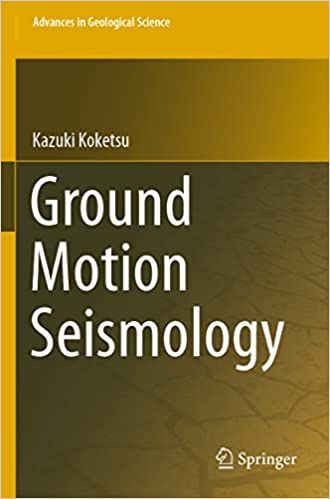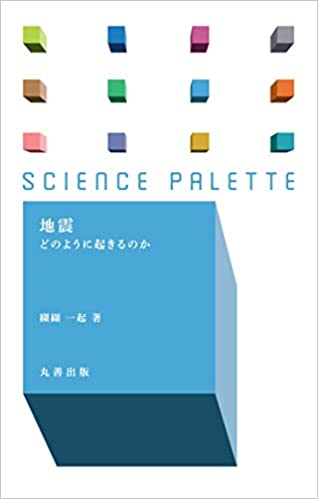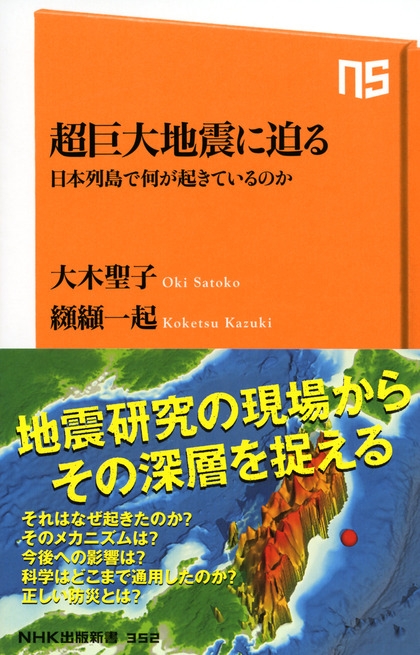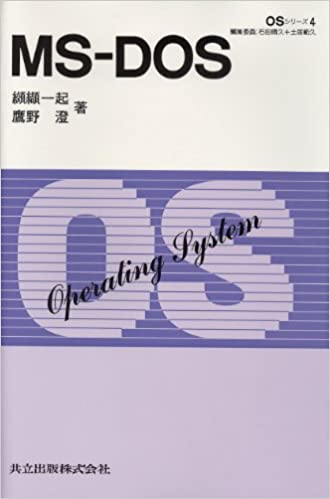- “Physics of Seismic Ground Motion” Ver. 1.1 (in Japanese; Dec. 2021)
- “Ground Motion Seismology” (Jan. 2021)
- “Earthquakes — How do they occur?” (in Japanese; May 2020)
- “Physics of Seismic Ground Motion” First Printing (in Japanese; Dec. 2018)
- “Getting close to the megathrust earthquake” (in Japanese; Jun. 2011)
- “Earthquake/Tsunami and Volcano Encyclopedia” (in Japanese; Feb. 2008)
- “MS-DOS” (in Japanese; Mar. 1988)
|
This is a reprint of "Physics of Seismic Ground Motion", the first printing of which was published in December 2018 as written below. From this printing it is printed on demand, and the imprint says Ver. 1.1 instead of the 2nd printing. The errata and minor corrections (sticky notes on the left of the figure below) of the first printing were reflected. In addition, the papers used are lightweight and thin so that the weight and thickness of Ver. 1.1 are about 2/3 as shown on the right of the figure below. Here is an excerpt from the preface to this printing. ⇒ To its Amazon page 
|

|
|
This is an English textbook on earthquake ground motion published by Springer in January 2021. In terms of content, it consists of "Physics of Seismic Ground Motion" plus hypocenter determination and seismic tomography, and exercises are added at the end of each chapter in order to function as a textbook. The official introduction by Springer is as follows. This book explains the physics behind seismic ground motions and seismic waves to graduate and upper undergraduate students as well as to professionals. Both seismic ground motions and seismic waves are terms for “shaking” due to earthquakes, but it is common that shaking in the near field of an earthquake source is called seismic ground motion and in the far field is called seismic waves. Seismic ground motion is often described by the tensor formula based on the representation theorem, but in this book explicit formulation is emphasized beginning with Augustus Edward Hough Love (1863 – 1940). The book also explains in depth the equations and methods used for analysis and computation of shaking close to an earthquake source. In addition, it provides in detail information and knowledge related to teleseismic body waves, which are frequently used in the analysis of the source of an earthquake. ⇒ To the Amazon page of its hardcover or paperback edition |

|
|
This was published in May 2020 as No. 036 in the "Science Palette" series by Maruzen Publishing. I explain the underlying principles of earthquakes using drawings and formulas. In the explanations, I use the knowledge of physics and mathematics that we learned in junior and senior high schools, but I think that there are many readers who have forgotten, so I have also included explanations of such knowledge. The official introduction by Maruzen Publishing is as follows. There are more than ten plates on the earth, and earthquakes are caused by the pressing of the plates against each other. Mathematical formulas are essential to understanding the science of earthquakes. However, although there are textual explanations of earthquakes in the past, none of them properly explain earthquakes from the principles using mathematical formulas. This book explains in an easy-to-understand manner the structure of the earth, the principle of earthquake generation, and the established theory of earthquakes that have been considered so far, using mathematical formulas. ⇒ To its Amazon page |

|
|
It was published by Kindai Kagaku in December 2018. Professor Kanamori's comments on this book are there, as well as the preface and errata. A summary of the preface is as follows. This tbook aims to explain the physics behind seismic ground motion and seismic waves for graduate and late undergraduate students or professionals. Both seismic ground motions and seismic waves are terms for “shaking” due to earthquakes, but it is common that shaking in the near field of an earthquake source is called seismic ground motion and in the far field is called seismic waves. The reason why this book is titled "The Physics of Seismic Ground Motion" is that it aims to explain in detail the formulas and methods used in the analysis and computation of shaking in the near field. However, I also explained in detail about teleseimic body waves, which are frequently used in the analysis of earthquake sources. Although there are several similar books in English, this book is characterized by not only presenting formulas and methods, but also explaining them so that the reader can derive them himself. In particular, seismic ground motion is often explained by tensor formulas based on the representation theorem, but in this book, I emphasized the explicit formulation beginning with Love (1906). This is based on my idea that it is easier to grasp the physical images of seismic ground motion, especially the geometric image. ⇒ As mentioned above, a reprint has been released, so if you wish this first printing, please select a second-hand item on Amazon. |

|
— What's going on in the Japan islands?” (in Japanese)
|
This book is one of the NHK Publishing series co-authored with Dr. Satoko Oki, which was urgently published in June 2011 immediately after the Great East Japan Earthquake Disaster. The introduction by the publisher written on the cover sleeve is as follows. The 3.11 Tohoku earthquake shook the Japanese archipelago and caused unprecedented damage. Why did it happen? What is the mechanism? And what are the implications? Based on the correct information and from the viewpoint of earthquake research that has been accumulated so far, this is a book that tells you what you know about this earthquake, what you don't know, and what you can do in the future. The structure of chapters is: Introductory Chapter. Documentary on 3.11, Chapter 1. How the megathrust earthquake occurred, Chapter 2. How the giant tsunami occurred, Chapter 3. Various phenomena caused, Chapter 4. The limits and future of earthquake science, Chapter 5. Disaster prevention – Rightly fear, and Final Chapter. Simulation of the Great West Japan Earthquake Disaster. Please see Dr. Oki's website for book reviews and royalties donations. ⇒ To its Amazon page |

|
|
This is an encyclopedia jointly edited with Dr. Toshitsugu Fujii, published by Maruzen Publishing in February 2008. The introduction by the publisher written on the cover sleeve is as follows. The Japanese archipelago lies on the volcanic belt and seismic belt. Among natural disasters, disasters caused by earthquakes, tsunamis, and volcanic eruptions cause large-scale damage, and people are particularly concerned about them. This book provides easy-to-understand explanations of the three major disasters under the supervision of the Earthquake Research Institute of the University of Tokyo. With plain text and a variety of full-color illustrations, this book provides an understanding of the mechanisms of earthquakes, tsunamis, and volcanoes, past damage, future predictions, and countermeasures, from the basics to the forefront of research. The definitive edition of earthquakes, tsunamis, and volcanoes, with plenty of columns and materials. The chapters are organized as: Chapter 1. Earth·1.1 Inside the Earth·1.2 Activity of the Earth, Chapter 2. Earthquake·2.1 What is an earthquake?·2.2 Seismic waves and ground motion·2.3 Phenomena and disasters associated with earthquakes·2.4 Tsunamis and their disasters·2.5 Estimates of earthquakes, Chapter 3. Volcanoes·3.1 What is a volcano?·3.2 Magma at the base of a volcano·3.3 Mechanism and scale of an eruption·3.4 Phenomena associated with volcanic eruptions·3.5 Volcanic products and eruptive phenomena·3.6 Volcanic eruptions and the environment·3.7 Disasters caused by volcanic activity·s3.8 past major eruptions·3.9 Extraterrestrial volcanoes. ⇒ To its Amazon page |

|
|
This book was co-authored with Dr. Kiyoshi Takano, and was published in March 1988 as Volume 4 of the OS series by Kyoritsu Shuppan. It has been reprinted more than 10 times and is now out of print, but there are many used copies on the market, so please look for it on
Amazon etc. The background to writing this book and the source codes of the sample programs in it are available on the Data/Codes page. The handbook for MS-DOS, which was an OS for 16-bit personal computers, is historical in the era of 64-bit personal computers and Windows. However, the customer reviews on Amazon have given it the highest rating of 5.0, stating that it is "the gold standard of MS-DOS" and that it is "recommended for those who want to be able to create their own OS". The chapters are organized as: Chapter 1. Microcomputer OS, Chapter 2. Basics of MS-DOS, Chapter 3. Structure of MS-DOS, Chapter 4. Operating System (MSDOS.SYS), Chapter 5. Input/Output Control System (IO.SYS), Chapter 6. Basic Input/Output System (BIOS), and Chapter 7. The Future of MS-DOS. |

|
Jan. 03, 2023
1365 (1) from 2022/02/02